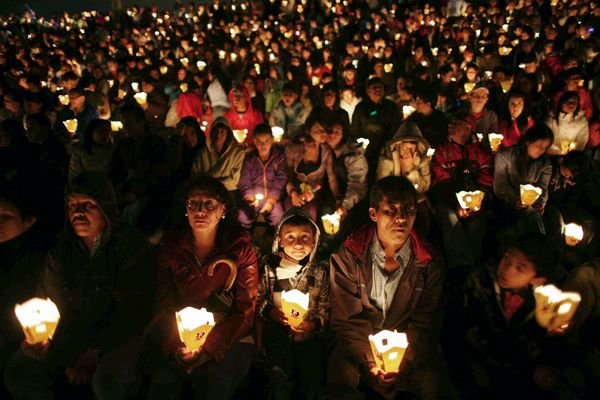Las Posadas is a novenario (an extended devotional prayer). It is celebrated chiefly in Latin America, Mexico, Guatemala, Honduras, Cuba, Spain, and by Hispanics in the United States. It is typically celebrated each year between December 16 and December 24.
Las Posadas derives from the Spanish word posada (lodging, or accommodation) which, in this case, refers to the inn from the Nativity story. It uses the plural form as the celebration lasts for a nine-day interval (called the novena) during the Christmas season, which represents the nine-month pregnancy of Mary, the mother of Jesus Christ.
Children in Oaxaca, Mexico celebrate Las Posadas by breaking a Piñata.
This celebration has been a Mexican tradition for over 400 years, starting in 1586. Many Mexican holidays include dramatizations of original events, a tradition which has its roots in the ritual of Bible plays used to teach religious doctrine to a largely illiterate population in 10th- and 11th-century Europe. The plays lost favor with the Church and were eventually banned as they became popular through the addition of folk music and other non-religious elements; they were reintroduced in the 16th century by two Spanish saints[who?] as the Christmas pageant — a new kind of religious ceremony to accompany the Christmas holiday.
In Mexico, the winter solstice festival was one of the most important celebrations of the year that came on December 12 according to the Julian calendar used by the Spanish until 1582. According to the Aztec calendar, Tonantzin Guadalupe (the mother of the gods) was celebrated on the winter solstice, and she is still feted on December 12, while their most important deity, the sun god Huitzilopochtli, was born during the month of December (panquetzaliztli). The parallel in time between this native celebration and the celebration of Christmas lent itself to an almost-seamless merging of the two holidays. Seeing the opportunity to proselytize, Spanish missionaries brought the reinvented religious pageant to Mexico where they used it to teach the story of Jesus' birth. In 1586, Friar Diego de Soria obtained a Papal bull from Pope Sixtus V, stating that a Christmas mass should be observed throughout Mexico on the nine days preceding Christmas Day.
While its roots are in Catholicism, Protestant Latinos also follow the tradition.









